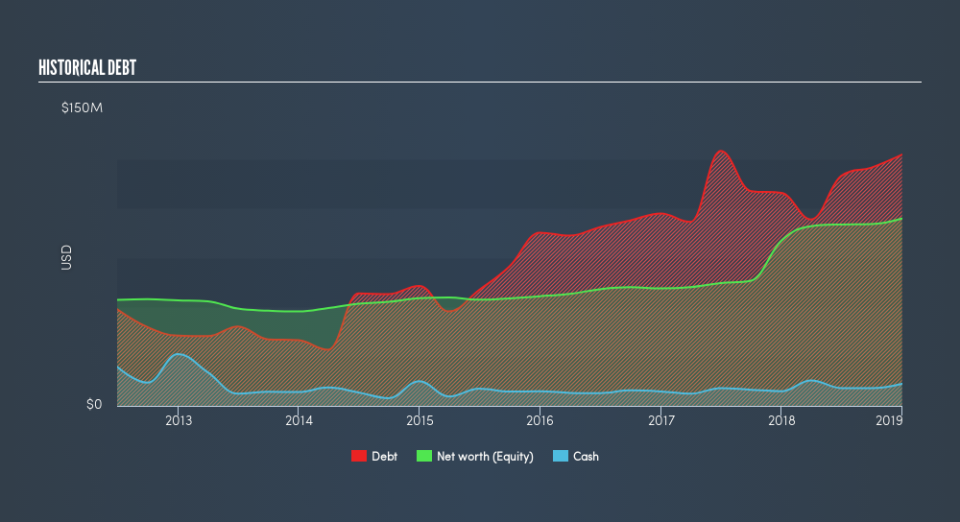What You Should Know About Eagle Bancorp Montana, Inc.’s (NASDAQ:EBMT) Liquidity

Eagle Bancorp Montana, Inc.’s (NASDAQ:EBMT) profitability and risk are largely affected by the underlying economic growth for the region it operates in US given it is a small-cap stock with a market capitalisation of US$104m. Since banks make money by reinvesting its customers’ deposits in the form of loans, strong economic growth will drive the level of savings deposits and demand for loans, directly impacting the cash flows of those banks. Post-GFC recovery brought about a new set of reforms, Basel III, which was created to improve regulation, supervision and risk management in the financial services industry. The Basel III reforms are aimed at banking regulations to improve financial institutions’ ability to absorb shocks caused by economic stress which could expose banks like Eagle Bancorp Montana to vulnerabilities. Its financial position may weaken in an adverse macro event such as political instability which is why it is crucial to understand how well the bank manages its risks. High liquidity and low leverage could position Eagle Bancorp Montana favourably at the face of macro headwinds. A way to measure this risk is to look at three leverage and liquidity metrics which I will take you through today.
See our latest analysis for Eagle Bancorp Montana
Why Does EBMT's Leverage Matter?
A low level of leverage subjects a bank to less risk and enhances its ability to pay back its debtors. Leverage can be thought of as the amount of assets a bank owns relative to its shareholders’ funds. While financial companies will always have some leverage for a sufficient capital buffer, Eagle Bancorp Montana’s leverage ratio of 9.01x is significantly below the appropriate ceiling of 20x. With assets 9.01 times equity, the banks has maintained a prudent level of its own fund relative to borrowed fund which places it in a strong position to pay back its debt in times of adverse events. If the bank needs to increase its debt levels to firm up its capital cushion, there is plenty of headroom to do so without deteriorating its financial position.
How Should We Measure EBMT's Liquidity?

As I alluded to above, loans are relatively illiquid. It’s helpful to understand how much of this illiquid asset makes up Eagle Bancorp Montana’s total asset. Generally, they should make up less than 70% of total assets, however its current level of 71% means the bank has lent out 1.47% above the sensible threshold. This means its revenue is reliant on these specific assets which means the bank is also more likely to be exposed to default compared to its competitors with less loans.
Does EBMT Have Liquidity Mismatch?
Banks profit by lending out its customers’ deposits as loans and charge an interest on the principle. These loans tend to be fixed term which means they cannot be readily realized, however, customer deposits are liabilities which must be repaid on-demand and in short notice. The disparity between the immediacy of deposits compared to the illiquid nature of loans puts pressure on the bank’s financial position if an adverse event requires the bank to repay its depositors. Since Eagle Bancorp Montana’s loan to deposit ratio of 97% is higher than the appropriate level of 90%, this level puts the bank in a risky position as it borders negative liquidity disparity between loan and deposit levels. Essentially, for $1 of deposits with the bank, it lends out more than $0.9 which is risky.
Next Steps:
We've only touched on operational risks for EBMT in this article. But as a stock investment, there are other fundamentals you need to understand. There are three key aspects you should look at:
Future Outlook: What are well-informed industry analysts predicting for EBMT’s future growth? Take a look at our free research report of analyst consensus for EBMT’s outlook.
Valuation: What is EBMT worth today? Has the future growth potential already been factored into the price? The intrinsic value infographic in our free research report helps visualize whether EBMT is currently mispriced by the market.
Other High-Performing Stocks: Are there other stocks that provide better prospects with proven track records? Explore our free list of these great stocks here.
We aim to bring you long-term focused research analysis driven by fundamental data. Note that our analysis may not factor in the latest price-sensitive company announcements or qualitative material.
If you spot an error that warrants correction, please contact the editor at editorial-team@simplywallst.com. This article by Simply Wall St is general in nature. It does not constitute a recommendation to buy or sell any stock, and does not take account of your objectives, or your financial situation. Simply Wall St has no position in the stocks mentioned. Thank you for reading.


